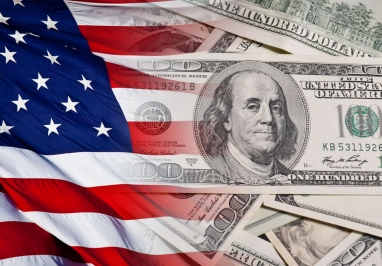
The Paycheck Protection Program (PPP) created under the “CARES Act” has been the cause of some confusion and concern since its enactment back in March 2020. In an effort to ease anxiety over looming deadlines, the Paycheck Protection Program Flexibility Act (the “Flexibility Act”) was signed into law on June 5, 2020, to address some of the program’s shortcomings. The Flexibility Act’s modifications primarily provide PPP borrowers with some breathing room and extend the program, allowing new businesses to apply. A summary of the Flexibility Act’s key revisions are discussed below.
Certain deadlines extended to December 31, 2020
A major change implemented by the Flexibility Act is the extension of several key deadlines; the Act was signed into law just weeks before the PPP was set to expire on June 30, 2020. The first extended deadline is the “covered period,” meaning the time period during which a borrower can apply for a PPP loan, use its PPP loan proceeds, and fix any adverse reductions in employees or wages.1 Another extension under the Flexibility Act relates to the relatively short 8-week window borrowers originally had to use the PPP loan proceeds. That window has now been extended to 24 weeks from the date of funding of the PPP loan or to the end of the year, whichever is earlier.2 Finally, if an employer has had to significantly reduce wages or lay off any full-time equivalent employees during the pandemic, the deadline to return those numbers to where they were prior to February 15, 2020, has been extended to December 31 as well.
New exceptions to loan forgiveness reduction due to loss of full-time equivalent employees
If an employer had to reduce its number of full-time equivalent employees (FTEs) due to COVID-19 pandemic, and then was unable to rehire those employees or find replacements, it faced a reduction in the amount of the PPP loan that was eligible for forgiveness. The SBA had issued guidance on the subject previously, clarifying that the employer could avoid such a reduction if it documented a good faith written offer to the former employee and subsequent refusal. The Flexibility Act codifies this safe harbor—if the borrower can show documentation supporting an inability to rehire the former employee and an inability to hire a similarly qualified individual, there will be no reduction in its loan forgiveness amount.
The Flexibility Act also added another safe harbor. If the borrower can show it was unable to return to its pre-COVID-19 business level due to compliance with federal health & safety orders related to the maintenance of standards for sanitation, social distancing, or any other worker or customer safety requirement related to COVID–19, it can avoid any reduction in loan forgiveness amount as well. This safe harbor is beneficial for industries still under certain workplace restrictions. For example, restaurants, entertainment venues, and retail businesses all still face significant difficulties in returning to full capacity. Thus, some borrowers should keep careful documentation of how compliance with such health & safety orders is impacting their businesses.
Other key provisions
Several other changes to the PPP were brought about by the Flexibility Act.
- The percentage of loan proceeds which must be used for payroll costs was decreased from 75% to a new minimum of 60%.
- Repayment term for new loans (after June 5th) is 5-10 years, a significant increase from the original 2 years contemplated by the PPP. Those who entered into agreements before June 5th are eligible for the extended payback period if the lender agrees.
- Payments deferred until the lender receives the forgiven amount from the SBA or 10 months from the end of the covered period if the borrower does not apply for forgiveness within that 10 months.
- A borrower may now continue to defer 2020 payroll taxes, even after it receives loan forgiveness.
You can read the full text of the Flexibility Act here. This article has a useful table comparing the original CARES Act provisions with the new Flexibility Act.
Woods Aitken’s Coronavirus Resource page includes more valuable information regarding the coronavirus pandemic and all of our publications on COVID-19. We encourage you to visit this page for updates.
1Under the PPP, employers which reduced wages or employee numbers following receipt of the loan proceeds could face a proportional reduction of their loan forgiveness amount.
2Those borrowers who received their loan proceeds prior to June 5th can still elect to use the 8-week period.
